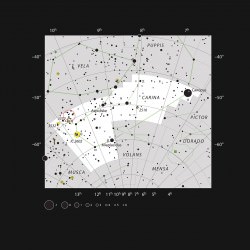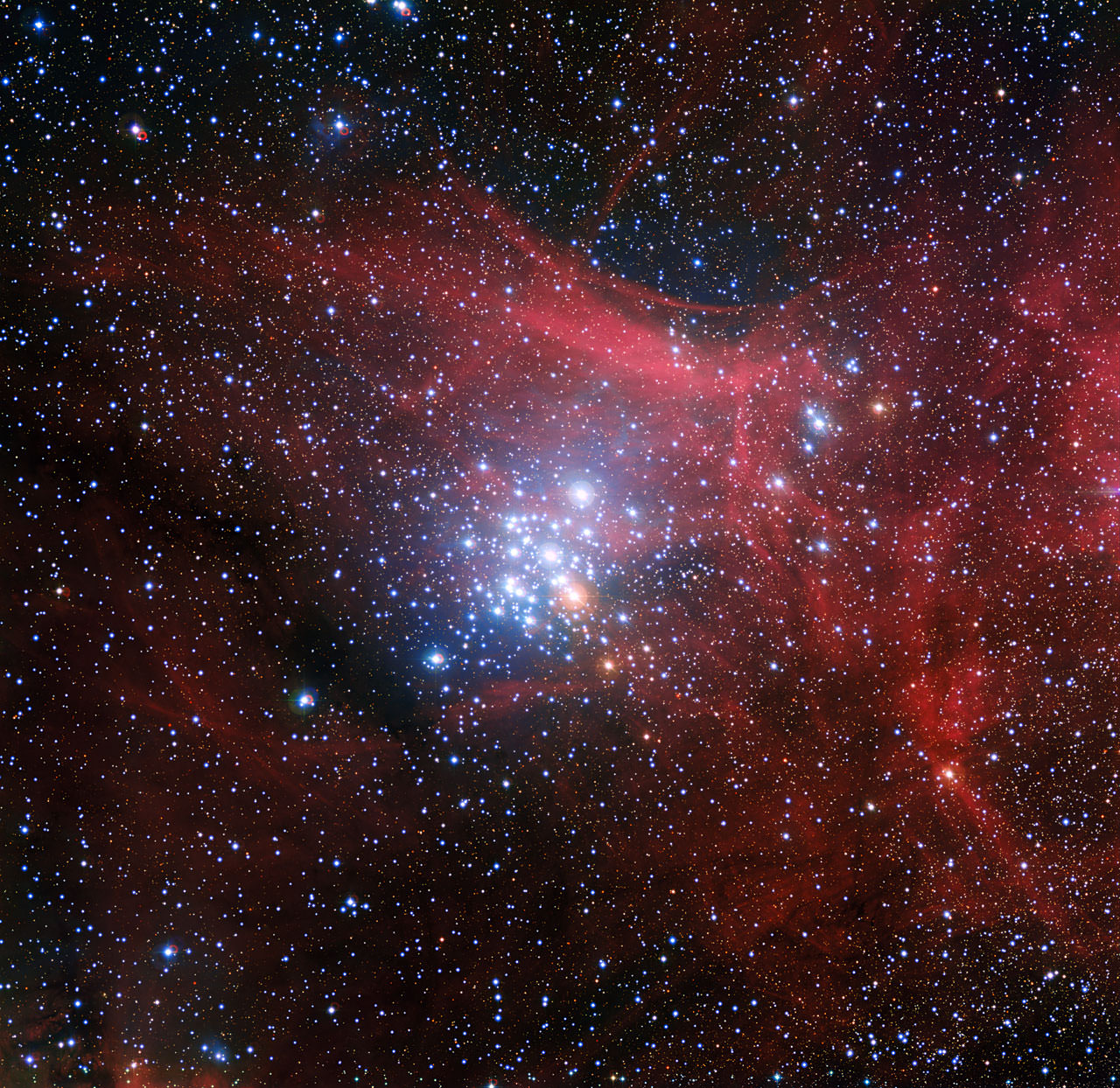Any human being knows the awe-inspiring wonder of a splash of stars against a dark backdrop. But it takes a skilled someone to truly appreciate a distant object viewed through an eyepiece. Your gut tightens as you realize that the tiny fuzzy blob is really thousands of light-years away.
That wave of amazement is encouraged by understanding and knowledge.
Stunning photographs of the cosmos further convey the beauty that arises from the simple interplay of dust, light and gas on absolutely massive and distant scales. The striking image above from ESO’s La Silla Observatory in Chile is but one example.
Stars are born in enormous clouds of gas and dust. Small pockets in these clouds collapse under the pull of gravity, eventually becoming so hot that they ignite nuclear fusion. The result is a cluster of tens to hundreds of thousands of stars bound together by their mutual gravitational attraction.
Every star in a cluster is roughly the same age and has the same chemical composition. They’re the closest thing astronomers have to a controlled laboratory environment.

The star cluster, NGC 3293, is located 8000 light-years from Earth in the constellation of Carina. It was first spotted by the French astronomer Nicolas-Louis de Lacaille during his stay in South Africa in 1751. Because it stands as one of the brightest clusters in the southern sky, de Lacaille was able to site it in a tiny telescope with an aperture of just 12 millimeters.
The cluster is less than 10 million years old, as can be seen by the abundance of hot, blue stars. Despite some evidence suggesting that there is still some ongoing star formation, it is thought that most, if not all, of the nearly 50 stars were born in one single event.
But even though these stars are all the same age, they do not all have the dazzling appearance of stars in their infancy. Some look positively elderly. The reason is simple: stars of different size, evolve at different speeds. More massive stars speed through their evolution, dying quickly, while less massive stars can live tens of billions of years.
Take the bright orange star at the bottom right of the cluster. Stars initially draw their energy from burning hydrogen into helium deep within their cores. But this star ran out of hydrogen fuel faster than its neighbors, and quickly evolved into a cool and bright, giant star with a contracted core but an extended atmosphere.
It’s now a cool, red giant, in a new stage of evolution, while its neighbors remain hot, young stars.
Eventually the star will collapse under its own gravity, throwing off its outer layers in a supernova explosion, and leaving behind a neutron star or a black hole. The peppering shock waves will likely initiate further star formation in the ever-changing laboratory.
Source: ESO

